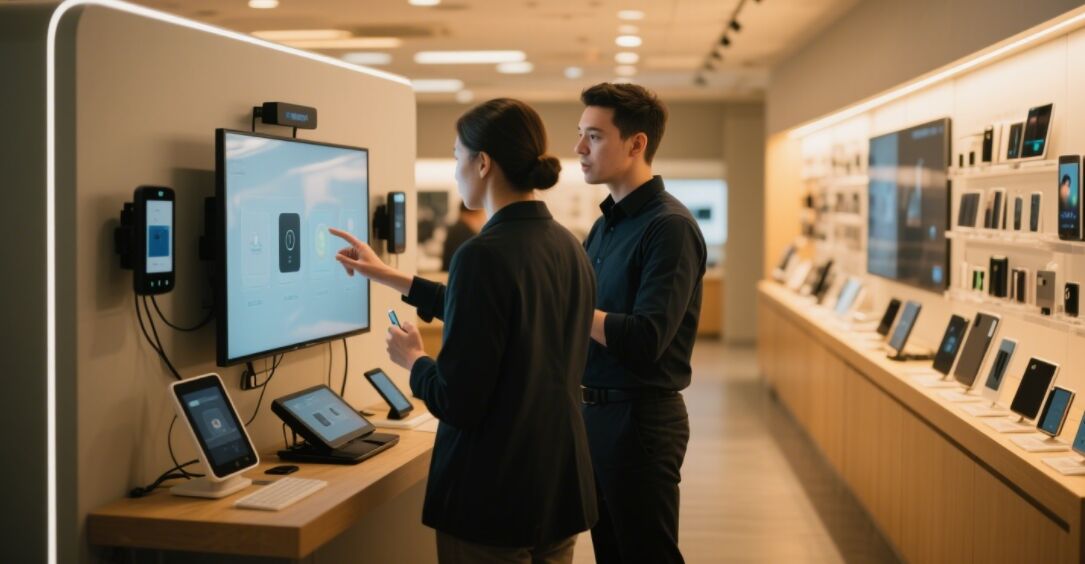In today's fast-paced retail environment, the integration of technology is not just a luxury but a necessity. With consumers constantly seeking more convenient, engaging, and efficient shopping experiences, retailers are turning to innovative solutions to stay competitive. One of the most significant advancements in recent years has been the introduction of industrial touchscreen monitors. These robust and versatile devices offer a myriad of benefits that can enhance the shopping experience, streamline operations, and ultimately drive sales. In this article, we will explore the various advantages of using industrial touchscreen monitors in retail spaces, highlighting their impact on customer engagement, operational efficiency, data collection, and more.
Enhanced Customer Engagement
Customer engagement is crucial in retail, and industrial touchscreen monitors play a pivotal role in creating interactive experiences. These monitors, with their intuitive and user-friendly interfaces, allow customers to browse products, access detailed information, and even make purchases directly from the screen. For example, in a high-end electronics store, customers can use touchscreen monitors to explore the features of the latest smartphones, view product reviews, and compare specifications side by side. By providing such an engaging interface, retailers can capture the attention of shoppers and encourage them to explore more products, potentially increasing the average transaction value.
Furthermore, these monitors can display personalized content based on customer preferences, purchase history, or real-time data such as location and time of day. For instance, a clothing store could use touchscreen monitors to show customers personalized outfit recommendations based on their past purchases or the current fashion trends in their area. This level of personalization not only enhances the shopping experience but also fosters brand loyalty, as customers feel that the retailer understands and caters to their individual needs.
Streamlined Operations
Efficiency is key in retail operations, and industrial touchscreen monitors can significantly streamline various processes. For inventory management, staff can use these devices to quickly scan barcodes, update stock levels, and generate reports. This reduces the time spent on manual stock checks, minimizing human error and ensuring that inventory data is always accurate and up-to-date. With real-time data access, employees can promptly respond to customer inquiries and provide accurate information about product availability, helping to avoid customer disappointment and potential lost sales.
Additionally, these monitors can facilitate transactions, whether it's through self-checkout systems or enhanced point-of-sale terminals. Self-checkout kiosks equipped with touchscreen monitors allow customers to scan and bag their items independently, reducing wait times at checkout and improving overall customer satisfaction. For staff-operated terminals, the touchscreen interface simplifies the payment process, enabling faster and more accurate transactions. This not only speeds up the customer journey but also frees up staff to focus on other important tasks, such as providing customer service or restocking shelves.
Data Collection and Analysis
In the era of big data, understanding customer behavior is essential for any retail business. Industrial touchscreen monitors can be equipped with advanced analytics software that tracks a wide range of customer interactions, including which products are viewed, how long customers spend on each screen, and what actions they take during the shopping process. This data can provide retailers with valuable insights into consumer behavior, allowing them to make informed decisions about inventory management, marketing strategies, and store layout.
For example, if analytics show that a particular product category is frequently viewed but rarely purchased, retailers can investigate the reasons behind this, such as pricing, product placement, or lack of information. They can then make adjustments to improve the customer experience and increase sales. By leveraging this information, businesses can optimize their offerings, target their marketing efforts more effectively, and enhance the overall shopping experience to better meet customer expectations.
Durability and Reliability
Retail environments can be demanding, with high foot traffic and potential exposure to spills, dust, and other hazards. Industrial touchscreen monitors are designed to withstand such conditions, featuring rugged construction and protective glass that prevents damage from impacts and moisture. They are built to operate continuously for long hours without overheating or experiencing technical glitches, ensuring that the devices remain operational even in the busiest of retail settings.
This durability not only reduces the need for frequent replacements and maintenance but also minimizes disruptions to the shopping experience. Retailers can rely on these monitors for long-term use, making them a cost-effective investment in the long run. Moreover, the reliability of these devices means that retailers can confidently integrate them into critical operations, knowing that they will perform consistently and effectively.
Versatility in Application
The versatility of industrial touchscreen monitors makes them suitable for a wide range of retail applications. In shopping malls, they can be used in kiosks to provide information about stores, promotions, and events, or to offer interactive maps to help customers navigate the complex layout. In grocery stores, they can serve as self-checkout systems, price checkers, or even digital recipe stations, offering customers inspiration for their meals while shopping.
Retailers can customize the software and interface of these monitors to align with their branding and customer service goals. For example, a luxury brand might design an elegant and sophisticated interface for its touchscreen monitors, while a family-friendly store could create a more colorful and playful one. This flexibility allows businesses to implement innovative solutions that enhance customer experiences and improve operational efficiency, giving them a competitive edge in the market.
Industry Trends and Future Directions
As technology continues to evolve at a rapid pace, the role of industrial touchscreen monitors in retail will only expand. Emerging trends such as augmented reality (AR) and artificial intelligence (AI) are set to revolutionize the way retailers interact with customers. AR applications can be integrated into touchscreen monitors to provide virtual try-ons for clothing and accessories, or immersive product demonstrations for electronics and home appliances, creating highly engaging and memorable shopping experiences.
AI-driven analytics will become even more sophisticated, enabling retailers to predict trends, anticipate customer needs, and personalize marketing efforts with greater precision. For example, AI could analyze customer data in real-time to offer instant discounts or recommendations based on a customer's browsing and purchase behavior. As these technologies develop and become more accessible, industrial touchscreen monitors will remain at the forefront of retail innovation, driving customer engagement, operational excellence, and business growth.


